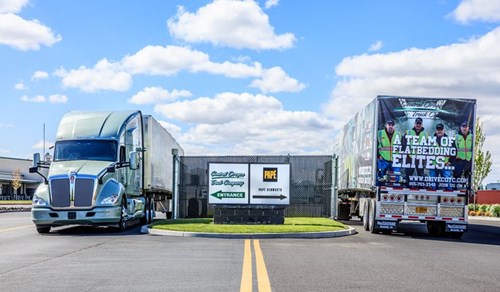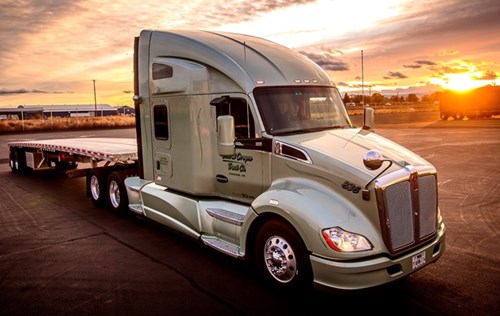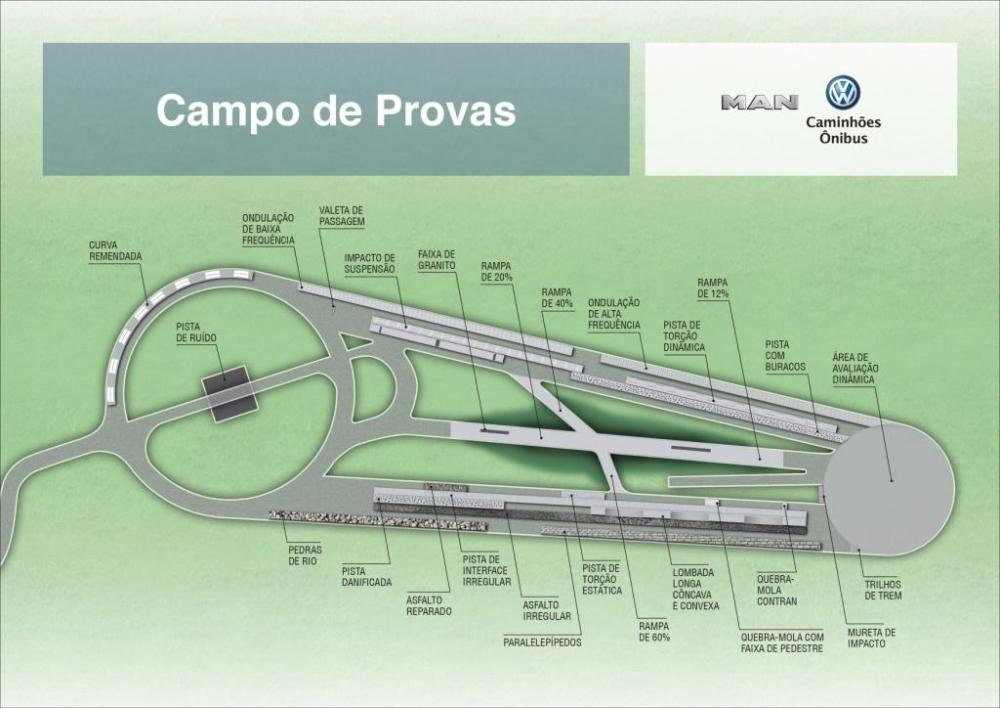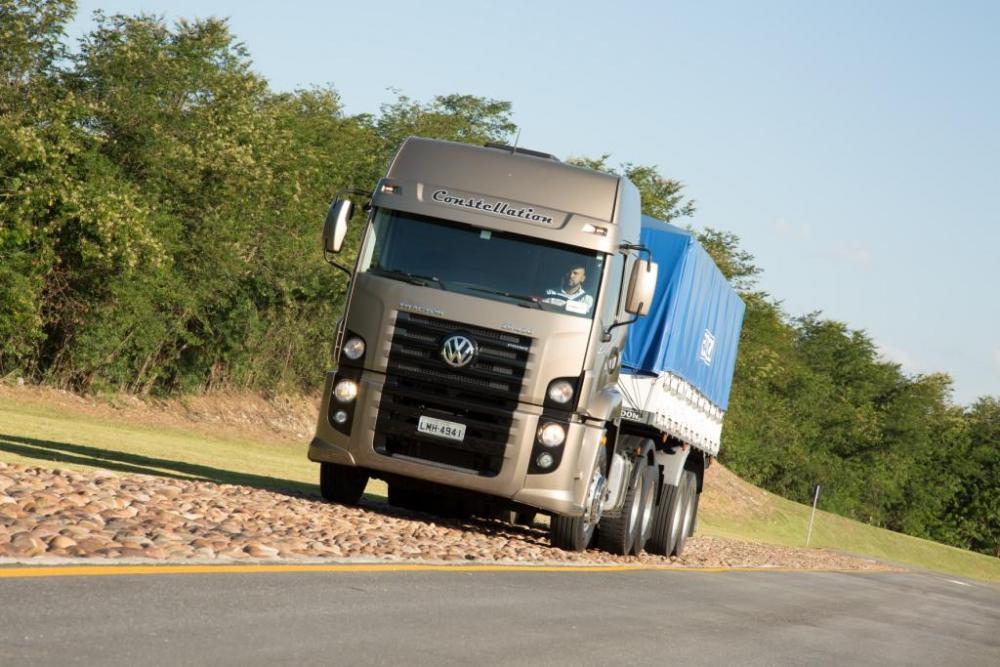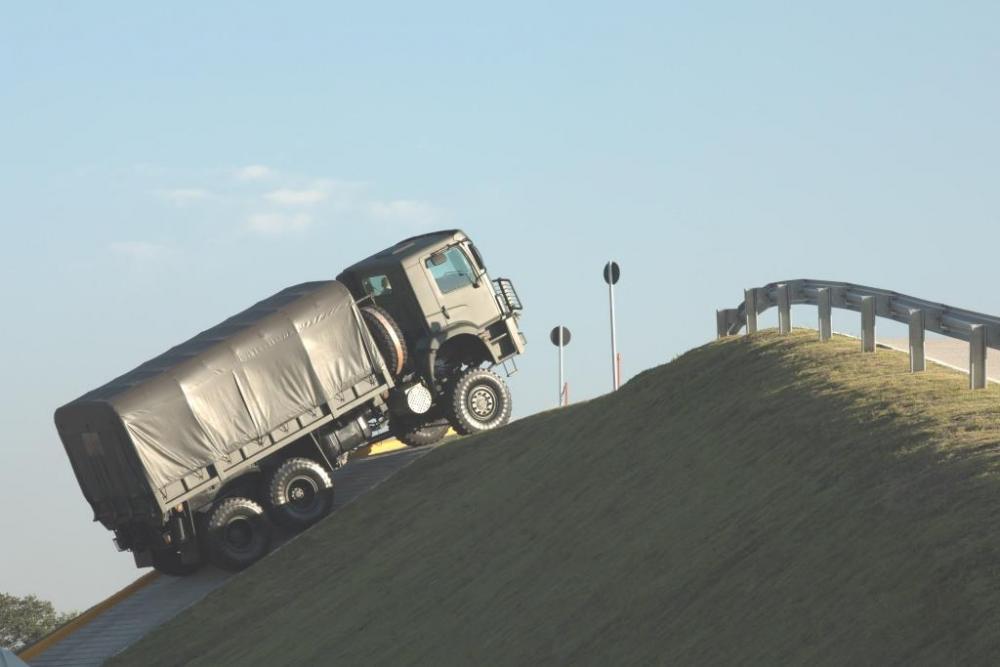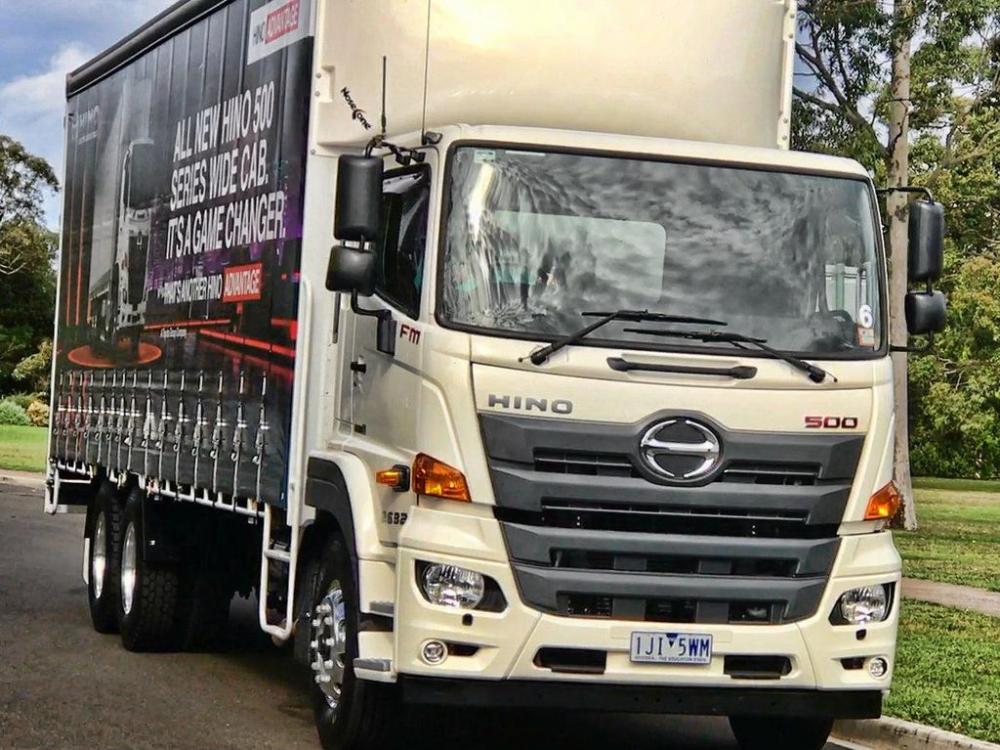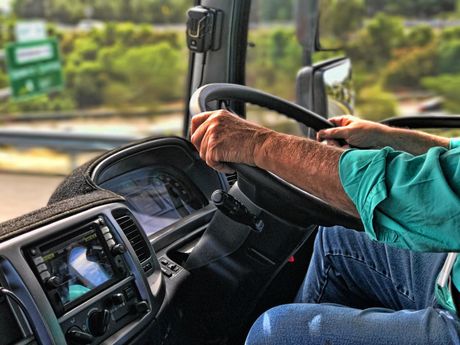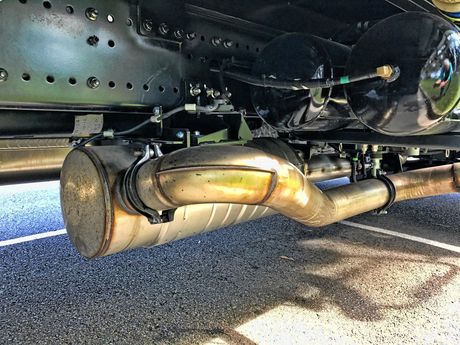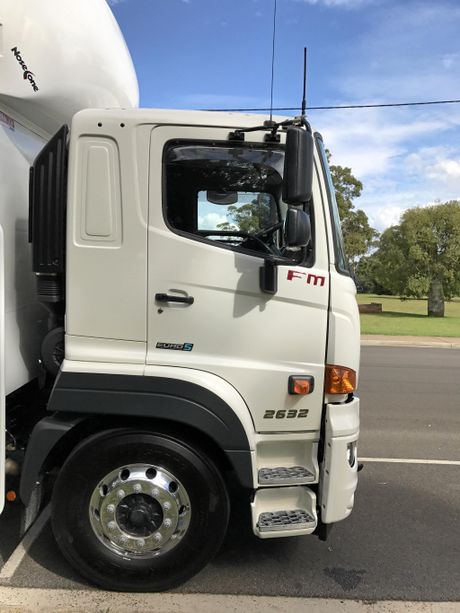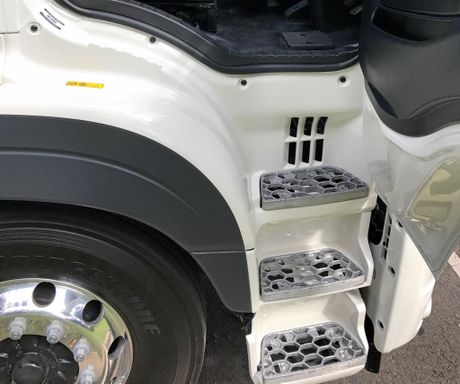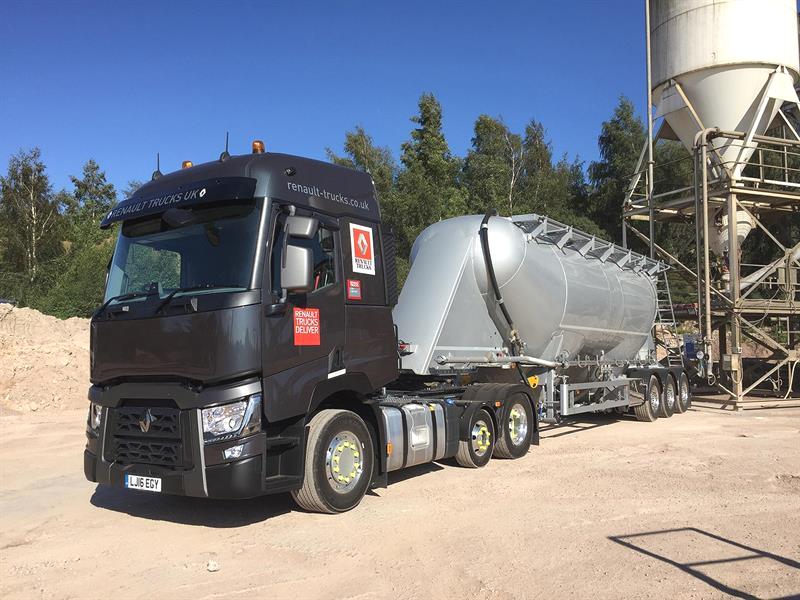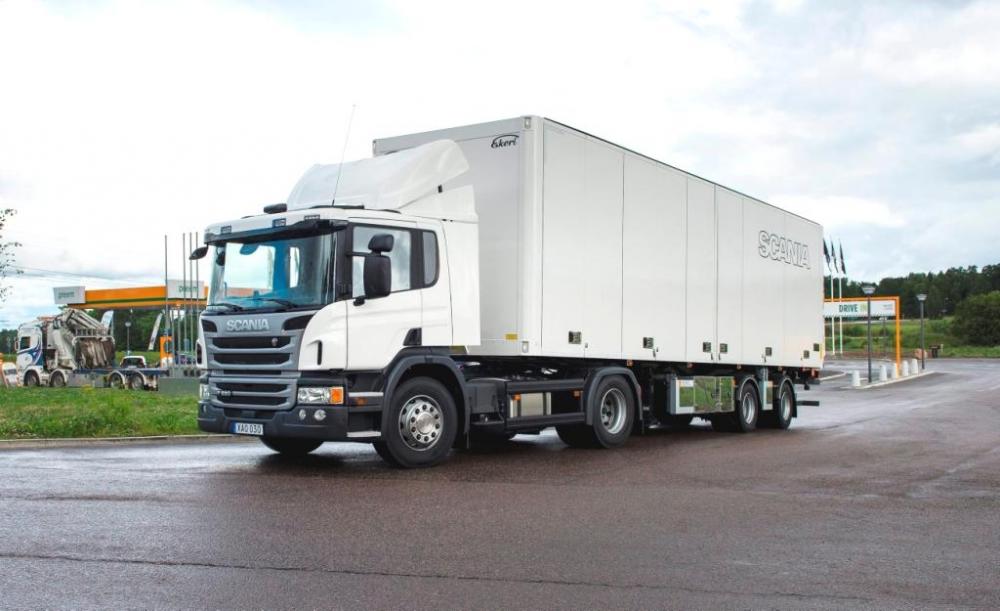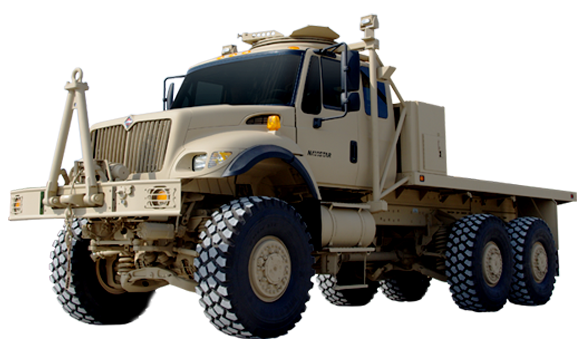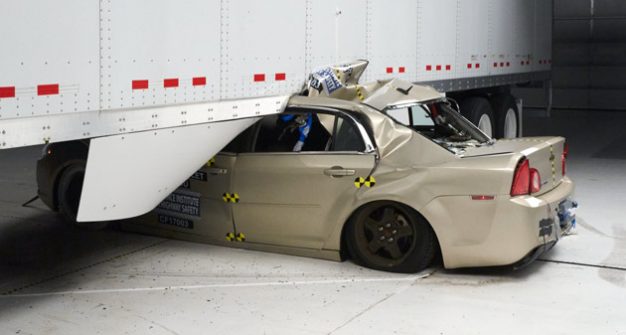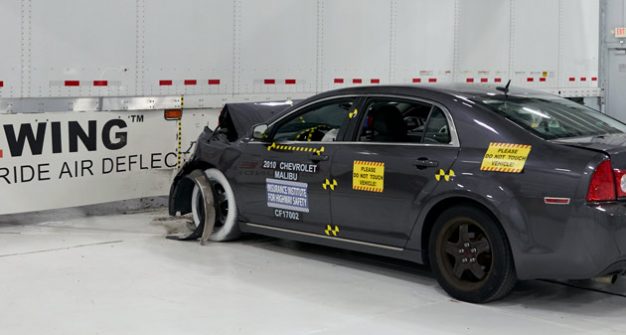
kscarbel2
Moderator-
Posts
18,886 -
Joined
-
Days Won
114
Content Type
Profiles
Forums
Gallery
Events
Blogs
BMT Wiki
Collections
Store
Everything posted by kscarbel2
-
DAF reveals the new DAF CF and XF - Pure Excellence
kscarbel2 replied to kscarbel2's topic in Trucking News
-
Kenworth TruckTech+ Helps Keep Central Oregon Truck Co. Rolling Kenworth Truck Co. Press Release / May 23, 2017 Onboard Diagnostics Increases Uptime for Oregon Flatbed Hauler REDMOND, Oregon - When drivers bring their trucks for servicing at the local Kenworth dealership, a service technician may run a single diagnostic test, or a battery of tests, to determine a single root cause. But with a Kenworth Class 8 truck equipped with Kenworth TruckTech+ Remote Diagnostics, the technician may be able to skip those diagnostic tests and start work immediately on solutions, by relying instead on real-time diagnostic data from the truck’s engine control module. “That greater visibility can help us maintain uptime, saving us potential revenue losses of upwards of $1,000 per day, when we have an incident or when a dash lamp is illuminated on one of our trucks,” said Josh Laughlin, maintenance specialist at Central Oregon Truck Co., which operates 242 T680s. “Kenworth TruckTech+ Remote Diagnostics increases our uptime by helping to pinpoint and handle service needs faster. With the data TruckTech+ collects, our dispatchers work with Papé Kenworth to produce solutions that may allow us to complete shipments, and schedule the servicing for when the driver returns to home base, or somewhere along the way when the driver is off-duty,” Laughlin noted. Kenworth TruckTech+ transmits vehicle diagnostics 24/7 to the fleet’s maintenance facility at its headquarters in Redmond, Oregon, and to Papé Kenworth. Company and dealer technicians and managers can view that information through the PACCAR Solutions web portal to help them determine how or when a specific issue should be addressed. But perhaps more important than the potential savings of time and money, Laughlin said the company maintains its reputation for on-time delivery performance, which is top priority for company managers, drivers and dispatchers. Central Oregon Truck Co. hauls loads for major manufacturers of building materials in the lower 48 states and Canada. “Being on time with deliveries in the construction and building industry is crucial because contractors may be relying on shipments to arrive at certain times at their delivery points so that projects stay on schedule,” Laughlin said. “If the deliveries are late, our customers may be facing huge penalties for holding up the projects.” Phil Taylor, vice president of maintenance for Central Oregon Truck Company, said the company and its drivers also greatly value the impact Kenworth TruckTech+ has had on driver productivity and performance. “Since TruckTech+ notifies us of potential issues as they unfold, we can plan any necessary maintenance around our drivers’ schedules and maximizes uptime,” Taylor said. “That way our drivers can continue on their way quickly. That can have a big impact on their paycheck and their satisfaction.” When one of the company’s Kenworth T680s was traveling under load in Canada in late March and early April, the system began alerting the company and the local Papé Kenworth dealer through email notifications about a potential fuel pressure issue. Brian Tate, Kenworth TruckTech+ Service Management program coordinator for Papé Kenworth, monitored the situation and as the number of email alerts increased, he contacted Laughlin and discussed options. Tate said by examining the truck’s service records, he could see that the fuel system was just about due for its next scheduled service. The TruckTech+ Service Management platform, powered by Decisiv, provides Tate and service staff members at Papé Kenworth and other Kenworth dealerships detailed chassis information, parts catalogs, service bulletins, plus warranty and repair histories to help them more quickly and efficiently diagnose, estimate and complete service work. “Based on the telematics data from TruckTech+ and our experience with the fuel systems, I was able to make the recommendation to continue driving, drop the load, and plan to service the truck at a more convenient time later that week,” Tate said. “Central Oregon Truck Co. decided to assign the driver a load that would allow him to return to his home base in Denver, where the truck could be brought to a dealership in the Kenworth dealer network for servicing during his 34-hour restart.” As the week wore on, the code alerts from the truck ECM became more frequent. To be on the safe side, Papé Kenworth’s Tate recommended that the truck go in for service before it reached Denver. “The truck’s fuel system was serviced and the problem was resolved,” Tate added. Since its introduction two years ago, Kenworth TruckTech+ Remote Diagnostics has quickly become an integral part of efforts by Kenworth and its dealers to help customers like Central Oregon Truck Co. maximize truck uptime by streamlining service and repair processes. More than 30,000 Kenworth trucks are equipped with Kenworth TruckTech+ and have traveled a combined 1.5 billion miles. “Kenworth TruckTech+ is a great tool for our company,” Laughlin said. “Anytime we can plan on when our trucks will be serviced rather than deal with the scheduling emergencies when trucks must be serviced, that’s a critically important benefit to our company’s operation.” .
-
Trump budget calls for drawing private highway funding, more tolls
kscarbel2 replied to kscarbel2's topic in Trucking News
War of Words Erupts over Trump's Call to Allow Interstate Tolls David Cullen, Heavy Duty Trucking / May 23, 2017 A 39-word statement in a just-released 6-page “fact sheet” on President Trump’s “infrastructure initiative” within his overall budget proposal has brought the toll vs. no-toll contenders out swinging. The bullet item calls for reducing the restriction on tolling of Interstate highways so as to “allow the States to assess their transportation needs and weigh the relative merits of tolling assets.” In the next sentence, the administration said that it also “supports allowing the private sector to construct, operate, and maintain interstate rest areas, which are often overburdened and inadequately maintained.” The International Bridge, Tunnel and Turnpike Association was quick to praise the Trump Administration for seeking to draw down the restriction against Interstate tolling that dates back over 60 years. “Today, the Trump Administration became the second straight White House to call for easing the ban on Interstate tolling and giving states the maximum flexibility needed to make the best funding decisions for their local transportation projects,” said Patrick Jones, IBTTA executive director and CEO. Jones said IBTTA wants “Congress to immediately join with the President to reduce burdensome regulations that prevent state and local governments from utilizing all available funding mechanisms. Toll financing may not be the answer for every highway, bridge, or tunnel project in the country, but the power of tolling is proven and effective. “Combined with the President’s proposed investment in infrastructure, tolling can provide valuable resources to the states to tackle transportation infrastructure projects,” he added. Not buying the administration’s proposal was the Alliance for Toll-Free Interstates. “We are very concerned about how heavily the Trump Administration wants to rely upon public-private partnerships to fund our roads and the idea of loosening the federal restriction on tolling interstate highways,” said ATFI Spokesperson Stephanie Kane. “As outlined in the proposed budget, leveraging $200 billion public dollars into a $1 trillion transportation plan will only be possible through widespread tolling to produce private sector profits.” Kane also argued that tolls are “the worst funding mechanism available and are a highly inefficient use of funds, as a significant portion of every dollar collected – typically 12-20% even with all-electronic tolling – goes to administrative costs and to private sector profits rather than building and repairing roads. “Tolling existing interstates is an idea that has been already considered and rejected,” she continued. “The now 19-year-old pilot program to toll existing interstates has failed in every state that has considered it. When the traveling public, businesses and local governments learn more about potential tolls in their area, they resoundingly reject the idea. Congress should heed this warning and not expand tolling.” Natso President and CEO Lisa Mullings also expressed umbrage at the twin tolling and private rest-stop funding proposal. “The proposals to toll Interstates and commercialize Interstate rest areas threaten the businesses that serve Interstate highway travelers, such as travel plazas, convenience stores and restaurants,” Mullings said. “Oftentimes, these businesses are the economic backbone of off-highway communities; these proposals therefore not only harm private companies but also thousands of local tax bases throughout the country.” Mullings also said that while “public-private partnership sounds innovative… what we need to understand is that public-private partnerships in the context of surface transportation are nothing more than toll roads. It would be great if we had a magic pot of money to pay for construction and maintenance of our roads. We don't. Under this proposal, the same people who have been paying fuel taxes to build and maintain these roads will have to pay tolls, too.” -
Commercial Carrier Journal (CCJ) / May 23, 2017 A 2018 fiscal year budget plan released Monday by the Trump Administration proposes slashing the Department of Transportation’s budget by nearly $17 billion annually by 2022, as well as allowing more tolls on U.S. Interstates and boosting efforts to draw private investors to fund highways. Trump’s proposal, “A New Foundation for American Greatness,” calls for $200 billion in infrastructure spending over 10 years. The $200 billion in outlays isn’t necessarily meant to fund projects directly, but instead to entice states, localities and private companies to inject $800 billion more into infrastructure funding. That would total $1 trillion, the infrastructure spending figure Trump consistently called for during his presidential campaign. Trump’s budget does not explicitly call for removing the Interstate tolling ban, but rather would allow states “to assess their transportation needs and weight the relative merits of tolling assets.” The budget also includes other initiatives meant to lure private investors, such as a removal of the $15 billion cap on tax-exempt bonds issued to private builders by the DOT. The White House budget proposal also says it supports greater private spending on rest areas by removing the current restriction on commercial rest areas. According to an outline issued by the Trump administration, private companies could “construct, operate and maintain interstate rest areas.” Trump said he will release more specifics on his infrastructure plan this year. The House’s Congressional Progressive Caucus, a group of Democrats, said they, too, plan to release an infrastructure proposal. It would counter Trump’s push for greater private spending by calling for ramped-up federal spending on highways and other infrastructure projects. Trump’s budget proposal, however, faces tough hurdles. Congress hasn’t passed a budget in several years, instead passing resolutions that continue prior-year funding levels over short-term periods. If Congress were to tackle a true 2018 fiscal year budget, it likely would take a different approach than Trump’s plan. Trump’s budget slashes federal spending overall, including big cuts to Medicaid, SNAP (food stamps), disability and other social programs. The DOT’s annual budget would drop from an estimated $79.4 billion for the 2017 fiscal year to an estimated $62.3 billion in 2022. The budget also calls for tax cuts and a balanced budget, according to projections from Trump’s team. However, achieving the balance requires an aggressive 3 percent annualized growth in GDP over the next five years — a high mark for an economy that’s seen only 1 percent to 2 percent growth since the Great Recession.
-
Fiat Chrysler sued by U.S. over excess diesel emissions Reuters / May 23, 2017 WASHINGTON -- The U.S. government has filed a civil lawsuit accusing Fiat Chrysler Automobiles of using software to bypass emission controls in diesel vehicles. The U.S. Justice Department suit, filed in U.S. District court in Detroit, is a procedural step that may ramp up pressure on Fiat Chrysler. Fiat Chrysler has denied any wrongdoing. FCA said in a statement that it is reviewing the complaint. It has been working with the EPA and California regulators to clarify issues related to emissions control technology in the 2014-2016 Jeep Grand Cherokee and Ram 1500 diesel vehicles. The automaker said it is "disappointed" that the government chose to file the lawsuit. "The company intends to defend itself vigorously, particularly against any claims that the Company engaged in any deliberate scheme to install defeat devices to cheat U.S. emissions tests," the statement said. FCA shares fell 4.1 percent to close at $10.32 on Tuesday. The suit also names Fiat Chrysler's diesel engine unit V.M. Motori SpA, which designed the engine in question. Reuters reported last week the Justice Department and EPA have obtained internal emails and other documents written in Italian that look at engine development and emissions issues that raise significant questions. The investigation has scrutinized VM Motori. FCA acquired a 50 percent stake in VM Motori in 2010 and the remainder in October 2013. The lawsuit states that FCA placed undeclared "defeat devices," or auxiliary emissions controls, in 2014-2016 Fiat Chrysler diesel vehicles that led to "much higher" than allowable levels of nitrogen oxide, or NOx pollution, which is linked to smog formation and respiratory problems. The suit seeks injunctive relief and unspecified civil penalties. EPA said in January the maximum fine is about $4.6 billion. Fiat Chrysler faces a separate ongoing criminal investigation on the emissions same issue by the Justice Department and probes by the U.S. Securities and Exchange Commission and many U.S. states. In January, EPA and California accused Fiat Chrysler of illegally using undisclosed software to allow excess diesel emissions in 104,000 U.S. 2014-2016 Jeep Grand Cherokees and Dodge Ram 1500 trucks. Fiat Chrysler said on Friday it plans to update software that it expects will resolve the concerns of U.S. regulators about excess emissions in those vehicles. The January notice was the result of regulators' investigation of rival Volkswagen, which prompted the government to review emissions from all other passenger diesel vehicles. Fiat Chrysler has applied for certification to sell 2017 diesel models from U.S. and California regulators and said it was in talks to win approval for a software update to address regulators' concerns about emissions in vehicles on the road. The software update would begin rolling out once the EPA and California Air Resources Board (CARB) approved it, Fiat Chrysler said Friday. FCA says it does not anticipate any impact on performance or fuel efficiency. A federal judge in California set a Wednesday hearing on a series of lawsuits filed by owners of vehicles and some dealers against Fiat Chrysler. ----------------------------------------------------------------------------------------------------------------------- U.S. Sues Fiat Chrysler, Accusing It of Using Software to Pass Emissions Tests The New York Times / May 23, 2017 The federal government filed a lawsuit against Fiat Chrysler Automobiles on Tuesday, accusing it of using illegal engine-control software to enable its diesel-powered vehicles to pass emissions tests. The filing occurred days after Fiat Chrysler proposed a modification to the software to ensure correct test results in hopes of resolving the issue. In a statement, the automaker said it was disappointed by the action and would defend itself against any claims that its software represents a “deliberate scheme to install defeat devices to cheat U.S. emissions tests.” The Environmental Protection Agency accused Fiat Chrysler in January of installing the software on about 104,000 Ram pickup trucks and Jeep Grand Cherokee sport utility vehicles sold from 2014 through 2016. Continue reading the main story In its complaint on Tuesday, the Justice Department noted that the engine controls in the Ram trucks and Jeeps are different from what are described in paperwork the company filed with the E.P.A. The features of the software, it said, “alone or in combination with one or more of the others, bypass, defeat and/or render inoperative” the vehicles’ emission control system, causing them to emit “emit substantially higher levels” of nitric oxide than allowed. United States officials view the Fiat Chrysler matter as less serious than Volkswagen, and stopped short of accusing the company of intentionally engineering the software to cheat on emissions tests. Filing the suit is seen as an effort to accelerate settlement negotiations, after the company outlined its proposal last Friday to reset the engine software in the affected vehicles. The suit was filed by the Justice Department’s environmental enforcement section in United States District Court for the Eastern District of Michigan. The emissions issue has essentially stopped Fiat Chrysler’s domestic sales of diesel-powered Ram trucks and Grand Cherokees. In 2015 and 2016, the company sold more than 50,000 diesel Ram pickups a year in the United States, making it by far the largest-selling diesel-powered light vehicle in the country. But the company has been unable to sell diesel vehicles in the United States for the current model year because the E.P.A. has not certified that they meet emissions regulations. Before any resumption of sales, the E.P.A. would have to test and approve the new engine software that the company has developed, a process that could take weeks or months. Once the software is certified, Fiat Chrysler could alert owners to the update by a recall or possibly a less formal customer-service campaign. The method will be determined in negotiations with the E.P.A. Either way, customers would be notified by mail and other means to bring their vehicles to a dealer to have the software updated at no charge.
-
KD 517 Cab lights
kscarbel2 replied to Keith S's topic in Antique and Classic Mack Trucks General Discussion
Are the original 38MO216 cab roof marker lamps no longer available from Watts ? -
Front fender mud flaps for B model
kscarbel2 replied to Freightrain's topic in Exterior, Cab, Accessories and Detailing
The front fender rear mud flap for a B-61 (regular B-model) was a 117QM185, attached with 130AX258 screws using a 71RU11084 retainer. -
Former James Bond actor Roger Moore dies aged 89: family Reuters / May 23, 2017 British actor Roger Moore, who won international fame playing secret agent James Bond, died on Tuesday aged 89, his family said on the actor's official Twitter account. His 12 years as James Bond, the British agent with a voracious appetite for danger and sex, made Moore a millionaire and a heartthrob the world over. "It is with a heavy heart that we must announce our loving father, Sir Roger Moore, has passed away today in Switzerland after a short but brave battle with cancer," his three children announced in a statement on the Twitter account. The son of a London policeman, Moore once said the upper-crust image he portrayed both on and off the screen was a carefully nurtured cover for his shyness and timidity. He also said he was terrified of playing the sex scenes which were a key part of the Bond movies. Moore's big breakthrough as an actor came in 1962, when he won the part of "The Saint" in a popular television series of the same name. In this role, he honed his image of the urbane Englishman with a stream of damsels to rescue from distress. In 1973 came the coveted part of James Bond, writer Ian Fleming's action man spy 007, who held cinemagoers across the world in thrall. The Bond films were said to have earned Moore 14 million pounds ($22 million). He moved to the United States to become a tax exile. "I don't see why a chap shouldn't do what he likes and live where he wants on his money, and the British government, which allows talent to go abroad because of taxation, has only itself to blame," he said in an interview in 1989. After handing over the role of Bond to Timothy Dalton, Moore went into semi-retirement, living a millionaire's life and traveling between his homes in Los Angeles, Switzerland and the south of France. In 1991, he became an ambassador for the United Nations Children's Fund. Moore is survived by his fourth wife, Scandinavian socialite Kristina "Kiki" Tholstrup, whom he married in 2002. Video - https://www.youtube.com/watch?v=KsnikLCXKv4
-
The Guardian / May 23, 2017 The much-loved English actor, who made his name on the small screen before taking on the mantle of 007, has passed away in Switzerland He was the epitome of the suave English gent, quipping sweatlessly in a bespoke three-piece suit, who enjoyed an acting career spanning eight decades. On Tuesday, Roger Moore’s children announced his death at the age of 89 in Switzerland, saying: “he passed away today ... after a short but brave battle with cancer”. Moore was best known for playing the third incarnation of James Bond as well as his roles in hit shows The Saint and The Persuaders. He also devoted a lot of his time to humanitarian work, becoming a Unicef goodwill ambassador in 1991. The actor was born in London in 1927 and, after working as a model in the early 50s, he signed a seven-year contract with MGM. His early movies weren’t particularly memorable, from Interrupted Melody to The King’s Thief, and it was a move to the small screen that brought Moore his first taste of success. “During my early acting years I was told that to succeed you needed personality, talent and luck in equal measure,” Moore said to the Guardian in 2014. “I contest that. For me it’s been 99% luck. It’s no good being talented and not being in the right place at the right time.” His first break in TV came in romantic adventure Ivanhoe which was the start of a set of hit shows for Moore, including western Maverick and crime shows The Saint and The Persuaders. The success of The Saint gave Moore an opening in Hollywood yet the resulting spy movies failed to ignite the box office. Moore had been approached to play the character of James Bond but scheduling conflicts with his television roles meant that he was never available. When Connery had stepped down from the role for good, Moore was asked again and made his first Bond film in 1973, the well-received Live and Let Die. He went onto star in another six films as 007 over a period of 12 years, making him the longest running actor in the role. When he finally retired from the role in 1985, he was 58. “Being eternally known as Bond has no downside,” Moore told the Guardian. “People often call me ‘Mr Bond’ when we’re out and I don’t mind a bit. Why would I?” After handing over the reins to Timothy Dalton, Moore took a break from the spotlight and didn’t make another film until 1990. From then on, his acting work became sparse, including small roles in Spice World and Boat Trip. In 1999, Moore was awarded a CBE which then became a knighthood in 2003, given to him for his charity work. Moore’s decision to become a Unicef goodwill ambassador was actually based on his friendship with Audrey Hepburn, who had also worked with the same charity. “The knighthood for my humanitarian work meant more than if it had been for my acting,” Moore said to the Guardian. “I’m sure some people would say, “What does an actor know about world issues?” But [working for Unicef] I’ve become an expert on things from the causes of dwarfism to the benefits of breastfeeding. I feel very privileged.” Moore also wrote two books about his time as Bond as well as two autobiographies, the most recent of which was 2014’s Last Man Standing. When asked by Time in 2012 who his favourite Bond was, he changed his mind from Sean Connery to Daniel Craig. “You can either grow old gracefully or begrudgingly,” he said to GQ in 2008. “I chose both.” Moore is survived by his wife, Kristina Tholstrup, and three children.
-
The bus immediately caught my eye as well.
-
Volkswagen Truck & Bus Press Release / May 11, 2017 With the greatest diversity of obstacles per square meter, the new MAN Latin America proving grounds is the most efficient on the continent in terms of harnessing the space and complexity of the tests. It is the only facility in Latin America with ISO 10,844 international certification relating to vehicle external noise level approval. With 35,500 square meters of area, the equivalent of four soccer fields, the facility is the first for testing of commercial vehicles of the VW Group in Latin America. Video - https://vimeo.com/216871858 "We have a fleet with over a hundred trucks and Volkswagen and MAN buses in tests all over the country. Every month, they run about 300,000 kilometers. Supporting this testing we have a team of almost 600 professionals devoted to the development of our products. Our investment is significant to ensure quality and consequent customer satisfaction. The new proving grounds arrives to give even more efficiency to this work and integrates the financial resources that we continually apply in the country, "says Roberto Cortes, chairman and CEO of Man Latin America. One kilometer at the proving grounds can correspond to 50 km on the roads. In all, there are 26 different road conditions for truck testing. It is a high concentration per square meter to create the most demanding scenario possible. High intensity reduces the time of testing, giving even more efficiency to evaluations and positively impacting on the project as a whole of the vehicle. The undertaking delineates a controlled environment in order to guarantee the reproducibility of the test conditions and thus the best evaluation of the data for the maximum performance of the vehicle in the rounds in everyday situations of the customers. The 26 different events consider, for example, special pavements like river stones, cobblestones, train tracks, undulations in the so-called cow ribs, lumbar, metal plates with patched asphalt and also finely calibrated potholes. There are special ramps that can reach up to 60% inclination to test custom-sized trucks, such as the Volkswagen Constellation 31.320 6x6 developed for the Brazilian armed forces. Lighter inclinations represent departures and resumes to evaluate brake efficiency and cab tilting. Extreme twist situations serve to validate chassis structural components. .
-
Ford Trucks Brasil Press Release / May 3, 2017 In the trucking world, miles don't count distances, they tell stories. And it's in every one of those life stories that Ford trucks inspires to evolve into what we do because the trucking world can't stop. .
-
Bob, the chassis is indeed custom. Note the independent suspension front and rear by Hendrickson with AxleTech axles.
-
Road Test: Hino's new FM 2632 Bruce Honeywill, Big Rigs / May 22, 2017 We pick up the Hino FM 2632 for a day on the road to evaluate the new 500 series wide cab. I had driven a selection of these newly released Hinos out of Sydney a month or two ago, this was a chance to get to know one of the variety just a little better. The configuration is a 6x4, curtain-sided flat top. A configuration with a 26 tonne GVM, and with a load of bulk bags of sand we are grossing around 20 tonnes. An easy day is planned, just a run from Brisbane out through the hinterland of coastal Queensland, up the range to Toowoomba, take a few pics, grab a bite and back down the range and home. The FM 2632 nomenclature translates to you and I as a truck with a 26 tonne gross vehicle mass and a 320 hp engine. The FM badge of the 500 series tells you this is at the heavy end of the line-up, working up in categories from the FG through the GH and FL to the FM. The engine in the FM 2632 is a nine litre (just under) in-line six cylinder block with power peaking at 320 hp at 1800 rpm. Maximum torque is 1275Nm that peaks at 1100rpm and plateaus through to 1600rpm. The transmission is fully automatic with a six-speed Allison 3200 series. I chose the climb and descent of the Toowoomba Range as a reasonable challenge to ascertain the viability of a six-speed auto handling decent climbs with a 320hp engine and a 20 tonne truck. Hell, there are plenty of passenger cars and four wheel drives with six speed transmissions, but a truck? We'll see. On the road Three easy steps pull me into the driver's seat, easy and comfortable access for a truck specced for distribution work with likely plenty of getting in-and-out for the driver. Suspension seats for both driver and passenger bring a nice touch, and would be appreciated when an off-sider is used for transport of such commodities as furniture and irregular bulky items when two operators are required. The layout from the driver's point of view is efficient with all gauges and controls within easy reach. You ride tall in the FM, with real truck's eye view of the world. Push D-for-drive, touch the throttle and you are away. Like most Japanese manufactured trucks in this range, the FM is very easy to come to terms with, an expectation in a market where truck driving is perhaps not always the first vocation of the driver. Many automatic and AMT transmissions use the erectile gear lever metaphor as an operational interface, however the Hinos have a push button R-N-D set up on a console extending back from the dash. The truck handles the traffic comfortably and easily, visibility through the huge windscreen is beyond any normal expectation. With Brisbane behind us, the first hill is at Minden and the auto transmission came back one click into fifth and pulled the truck over the crest without any unexpected dropping of road speed. But the big one was yet to come. The Toowoomba Range is the real test on which I wanted to try this six-speed Allison transmission, and I soon found out that the 1275Nm of torque, stretched across a broad plateau, had lot of staying power. In the first pull out of Withcott, the Allison comes back only one gear as we head for the first saddle. Then the real climb begins. With six gears and 20 tonnes, of course the transmission is a little gappy. But this is a transmission and engine combination that works intelligently and selects gear shifts after hanging on to around 1000rpm. It certainly does not have that old clunk and scream of Allison transmissions of yesteryear. On up the hill, the transmission works back through five, four, three, back up to four, and on the last pinch to the crest of the range comes back to second gear but is still holding a road speed around 30kmh. And we are in Toowoomba. Time to check out the manual override of the transmission. Just double click the main control and the gears are now controlled by up and down arrows. No worries, I am now mentally ready to come down the Range. A little lunch and a few photographs and once more we drive along the top of the range, around the big right-hander and pull out around the big boys as we come down. After working out the manual system of the Allison I reckoned stuff it, I'll see what this truck can do using its own brains, and in full automatic we drop into the steep descents. I was surprised. A slight touch of the foot brake and the engine / transmission combo held road speed at 60kmh, coming back to fourth and third gears of its own volition. And that's how we did it, down the range swinging around B-doubles and pocket road trains, the Allison and the engine brake working together to make the descent safe and easy. Hino FM 2632 Engine: AO9C-US six cylinder in-line, turbocharged and intercooled Capacity: 8.866 litres Power: 320hp @ 1800rpm Torque: 1275Nm 1100 to 1750rpm Transmission: Allison 3200 series 6-speed double overdrive with electronic control GVM: 26 tonnes Emission Management: Euro V, Selective Catalytic Reduction (SCR / AdBlue) .
-
Ewals Cargo Care Press Release / May 15, 2017 Last week Ewals Cargo Care presented the Duo trailer movement at the Transport Logistic fair in Munich. The Duo trailer is a combination of one truck towing two trailers of 13,6 meters, linked by a “dolly”. The Duo trailer is not yet allowed to drive on the European roads, although it is successfully tested on a small scale in Sweden. At Ewals Cargo Care, we see some major advantages like a CO2 reduction of up to 40%, cost reduction for customers, and relief to a decreasing population of drivers. Furthermore this transport concept makes maximum use of intermodality by using existing standards (13,6m trailer) and existing infrastructure (rail wagons, yards, ferry slots). Therefore we see this as an additional solution to our intermodal transport services: next to single combination road, rail and ferry. . . .
-
HGVUK / May 21, 2017 Renault Trucks will be exhibiting three vehicles from its construction range at the forthcoming TIP-ex event (1-3 June; Harrogate Convention Centre). Renault Trucks returns to Hall M at Tip-ex/Tank-Ex 2017 with three robust trucks from its highly acclaimed construction range that underline the manufacturer’s position as the customer cost champion. The first two vehicles are 32-tonne 8×4 tippers – a Tarmac-spec 13-litre C520 and an 11-litre C430 Tridem with steering axle offering optimum manoeuvrability. Both trucks are equipped with PPG insulated aluminium aggregate bodies, carefully configured to suit a wide cross-section of multi-axle tipper operations. For operators looking for the manoeuvrability of a six-wheeler with the load capacity of an eight-wheeler, the Range C Tridem with factory-fitted extra axle adaption provides an effective solution. As well as improved site access, the manoeuvrability advantage of the Tridem’s rear-lifting axle keeps the truck closer to the kerb than a traditional 8×4 when turning left, which can help reduce the high-risk gap for cyclists. The third vehicle on the Renault Trucks stand is a lightweight T460 lightweight 44-tonne 11-litre 6×2 tractor unit with mini mid-lift (MML) suitable for aggregate or liquid applications featuring a factory-fitted PTO and tipping equipment. The Range T MML derivative, being up to half a tonne lighter than the standard 6×2 mid-lift, offers significant payload advantages for operators. Nigel Butler, Commercial Director, Renault Trucks UK, says: “With our unrivalled reputation for robust trucks designed for exceptional mobility in demanding environments and with optimised payload for maximum profitability, Renault Trucks is the UK construction industry’s customer cost champion. We offer a fully-integrated service for all sectors of the business from brick and block, aggregate delivery to quarrying, for both on and off-road applications. Tip-ex 2017 is the ideal opportunity for operators to discover more about our fuel-efficient trucks and the first class service support from our dealer network.” All Renault trucks are available with Euro-6 Step C-compliant engines, which can deliver reduced fuel costs of up to 2 per cent whist increasing payloads by up to 114 kgs. Visitors to the Renault Trucks stand will also be invited to join in the company’s campaign entitled, #proudprofessionals. Nigel Butler continues: “Our transport industry is well-regulated and highly professional, yet public perception can all too often be negative. That’s why we want to recognise and shine a light on everyone who works in transport and logistics, from technicians to truck drivers to change public perception and generate a sense of pride and self-belief in every individual with our #proudprofessionals initiative.” .
-
The Angelwing design cleverly addresses two issues. It provides side underrun protection, and acts as an air deflector to eliminate turbulence under the trailer for enhanced fuel economy. It's a win-win. Whenever I visit home, I notice that people are driving worse than ever. I have no answers for you there. .
-
Scania Group Press Release / May 22, 2017 Scania France has announced its first sale of an ethanol-powered truck to Transports NJS Faramia, a specialist in temperature-controlled transport. Scania is presently the only manufacturer to offer ethanol-powered heavy vehicles. With ED95, carbon emissions can be reduced by up to 90 percent. The heavy vehicle grade ED95 fuel was granted favourable taxation by the French Government earlier this year and hauliers can also benefit from accelerated depreciation of their vehicles. Additionally, ethanol qualifies for the highest environmental level in the French Crit’Air air quality vehicle certification scheme, which is in force in major French cities. Forerunner in sustainable transport NJS Faramia will operate the Scania P 280 truck for temperature-controlled food distribution in the Marseille area. The transport company is a forerunner in alternative sustainable transportation solutions and has previously taken Scania gas-powered trucks in operation as well as low-energy refrigeration systems. “Our aim is to offer all our customers the best quality of service. Economic efficiency, social equity and environmental responsibility are objectives which engage NJS Faramia in developing sustainable transport and long-term customer satisfaction,” says Managing Director Victor Faramia. The ED95 fuel will be produced from pomace – grape residue after pressing – from local wineries. The pomace will be collected and processed by Union des distilleries de la méditerranée in Vauvert, near Montpellier. .
-
Volvo Trucks Press Release / May 21, 2017 Boat 8 – built at Persico Marine in Bergamo, Italy – is now complete, and is heading to the Boatyard in Lisbon, Portugal to be fitted out. It's a delicate operation, with the boat being delivered via both road and sea. .
-
U.S. Dept. of Defense / May 15, 2017 Navistar Defense LLC, Lisle, Illinois, was awarded an $18,778,845 firm-fixed-price foreign military sales (Iraq) contract for 115 medium tactical vehicles (https://www.navistardefense.com/NavistarDefense/vehicles/7000_mv/7000_mv). One bid was solicited and one bid received. Work will be performed in West Point, Mississippi; Ooltewah, Tennessee; and Marion Wisconsin, with an estimated completion date of Jan. 13, 2018. Fiscal 2015 other funds in the amount of $18,778,845 were obligated at the time of the award. U.S. Army Contracting Command, Warren, Michigan, is the contracting activity (W56HZV-17-C-0090). .
-
Car & Driver / May 22, 2017 When semi-trailer trucks and passenger vehicles collide, the Insurance Institute for Highway Safety says, mandatory under-ride guards on the sides of tractor-trailer rigs could save lives. The trucking industry, though, says a better solution would be to hasten the rollout of advanced safety technology. This spring, IIHS has been dramatizing its argument by crashing mid-size cars at 35 mph into the center of a 53-foot-long dry van trailer. It says these crash tests show that a well-built guard on the side of a semi-trailer can prevent roof-peeling car wrecks that are often fatal. “Our tests and research show that side under-ride guards have the potential to save lives,” said David Zuby, the Institute’s executive vice president and chief research officer, in a press release. “We think a mandate for side under-ride guards on large trucks has merit, especially as crash deaths continue to rise on our roads.” Federal law requires large trucks to have rear under-ride guards, but side guards are not mandated nationwide. Some cities, including Boston, New York, and Seattle, require side guards on city-owned and -contracted trucks. The IIHS—funded by the auto insurance industry—and its research arm, the Highway Loss Data Institute (HLDI), have been studying under-ride crashes for decades and have been crash-testing and rating rear under-ride guard protection on trailers from the biggest manufacturers since 2011. The tests this spring, though, marked the first time that IIHS had evaluated under-ride protection for side collisions. One test included a side guard called an AngelWing from a company called AirFlow Deflector, which was featuring IIHS’s test results prominently on its website. An IIHS spokesman said the group does not have a business relationship with AirFlow Deflector. The Institute said it tested AngelWing because it’s the only product it is aware of that trucking companies can buy that offers this protection. In another IIHS test, the trailer had a fiberglass side skirt that is designed only to improve a truck’s aerodynamics, not to prevent a car from sliding beneath the trailer. Results with that device were “dramatically different,” the IIHS said. As seen in the image at the top of this story, part of the car’s roof was sheared off, and its occupants likely would have suffered fatal injuries, the group said. Only the AngelWing guard prevented a mid-size car from going underneath the trailer (photo below). That under-ride guard also allowed the car’s airbags and seatbelt to properly restrain the test dummy in the driver’s seat. Its maker says the guard also has fuel-saving aerodynamic benefits that help offset the cost. This type of crash, with a car hitting the side of a trailer, was at the heart of a high-profile accident involving Tesla’s Autopilot semi-autonomous driving system. Ohio native Joshua D. Brown was killed when his 2015 Model S, in self-driving Autopilot mode, failed to activate its automated emergency braking system and ran into and under the side of a tractor-trailer rig. Tesla said afterward that the Autopilot system failed to recognize the white side of the truck against a background of bright sunlight. There were 1542 deaths from crashes involving both passenger cars and tractor-trailers in 2015, according to the most recent federal data as analyzed by the IIHS. Of those, 301 fatalities involved a vehicle hitting the side of the trailer, which was down slightly from 308 in 2014. There were 35,022 traffic deaths in total that same year. The American Trucking Associations (ATA), a group representing the trucking industry, said in an emailed statement that focusing on crash prevention, not adding side guards to tractor-trailers, is the best course for preventing under-ride deaths. “Side under-ride crash protection has several complicating factors—engineering tradeoffs involving weight, strength, and effectiveness—that have prevented a consensus around adopting side under-ride guards,” the ATA statement read. The group said side under-ride guards “would add significant weight and require stiffer trailers” that can develop cracks and wear out sooner, causing other safety issues. It said a wider deployment of advanced safety technologies, such as automated emergency braking and forward-collision-warning systems, would be their pick to help prevent under-ride crashes. Rear under-ride guards, essentially strong bars, are required on most tractor-trailers. They are sometimes referred to as Mansfield bars because of their supposed connection to Hollywood starlet Jayne Mansfield. Mansfield was killed near New Orleans in June 1967 when her 1966 Buick Electra 225 crashed into the back of a tractor-trailer, killing her and two other front-seat passengers. Three children in the back seat escaped with minor injuries. But like other lore surrounding Mansfield’s untimely death, it’s not completely true: Today’s Mansfield bar was not a direct result of the fatal wreck. Requirements for under-ride guards on medium and heavy trucks were first issued in 1953, long before the accident that killed the actress. NHTSA’s regulatory predecessor called for an updated standard in 1967, but it was not until 1998 that the federal standard that applies to semi-trailers was updated and strengthened. .
-
How Silicon Valley Spurred Bill Ford Jr. to Replace His CEO Car & Driver / May 22, 2017 Silicon Valley has played an outsize role in shaping Bill Ford Jr.’s thinking about the future of the auto industry. Although he didn’t know it at the time, two experiences in recent years left signature impressions that would ultimately lead to this weekend’s shakeup at the Ford Motor Company. The first came toward the end of his tenure as a member of the eBay board of directors, which gave Ford a vantage point into a business culture dramatically different than the one he understood in Detroit. As he watched companies like Tesla Motors and Google gain a foothold on the future, he grasped the magnitude of the changes legacy automakers needed to make to survive, including working with traditional competitors. “The whole ‘frenemy’ thing in Silicon Valley, that was something very foreign to us,” he told an audience at a Ford Trends conference in September 2016. “It was clear for us in the auto industry who your competitors were. Spending time in the Valley, it was a much more gray situation.” Ford’s 10-year tenure with eBay so impressed him that he brought the Ford Motor Company’s own board of directors to Silicon Valley for a visit in February 2016. During meetings with leaders from Bay Area companies, he realized one of the automaker’s board members, Jim Hackett, was already familiar with the sweeping cultural shift Ford wanted to inject into his own company. “Every one of them were walking right up to Jim, and they gave him a hug and said, ‘I didn’t know you were on this board,’ ” Ford recalled in a media conference Monday. “The leaders out there said, ‘My gosh, he’s one of the real original thinkers that we know, and you guys are really lucky to have him on your board.’ ” One experience taught him that seismic changes were ahead. The other taught him that he had a potential answer for them nearby. Within weeks of those meetings, Ford appointed Hackett to head Ford Smart Mobility, a new subsidiary within the company focusing on future-minded innovations. On Monday, Ford promoted Hackett to a more prominent role, announcing he would succeed the ousted Mark Fields as the Ford Motor Company’s new CEO. In his new role, Hackett will be charged with boosting a stock price that has tumbled roughly 32 percent over the past three years amid Wall Street concerns that the company has lost market share and lagged competitors. Even as he seeks short-term solutions to boost a flagging stock price, Hackett is also charged with ensuring Ford’s preparations for a future based more on broad mobility solutions and less on personal car ownership stay on target. There were concerns the company had fallen behind in some of those efforts as well, and Hackett and Ford Jr. twice sidestepped questions Monday on whether the company remains on pace to launch a Level 4 autonomous vehicle by 2021. But Ford Jr. broadly acknowledged the company needs to move faster. “The clock speed at which the world is moving—and our competitors, not just other OEMs—really requires us to make decisions at a faster pace,” he said. “I don’t think we missed any opportunities per se, but if we’re going to win in this new world, we have to move fast and trust people to move fast. “The execution against the vision has to be quicker.” Ford has made several investments in that future vision, including a $1 billion investment in Argo AI, a Pittsburgh-based company focused on building artificial intelligence and computer vision for self-driving vehicles, that was announced in February. Last August, the company announced investments in lidar maker Velodyne and Civil Maps, a California company that develops high-definition 3D maps for autonomous vehicles. At the same time, Ford acquired San Francisco–based Chariot, a ride-hailing shuttle service, and SAIPS, an Israeli computer vision and machine-learning company. Ford has also ramped up staffing in its Smart Mobility subsidiary, growing it from 12 employees at the outset in March 2016 to nearly 600 today, according to Hackett. While the subsidiary will continue to exist on its own, Ford Jr. seemed to regret that such a distinction has been drawn between the main company and the future-focused one. Going forward, “We won’t talk a lot about emerging versus core. This is one company,” he said Monday. “Ford Smart Mobility is not the place where new things happen and everything else goes on the way it’s been going on. We don’t want competing groups. We don’t want one group to feel like the cool group and the other to feel like the left-out group.” A central part of Hackett’s job will be to better integrate the two and communicate to investors a single vision as the company marries ride-hailing products and autonomous vehicles with its bread-and-butter business of selling cars. In that respect, he said, the future is no fantasy. Nor is it one that favors Silicon Valley over legacy automotive businesses. “The biggest challenge is to have everybody see the future and see their opportunity in that,” he said. “Secondly, it’s our right to win there. We don’t have to cede that to anybody. Tesla, anybody. It’s our right to win there.”
-
BC, after your many years of toil, this car has your name all over it.
BigMackTrucks.com
BigMackTrucks.com is a support forum for antique, classic and modern Mack Trucks! The forum is owned and maintained by Watt's Truck Center, Inc. an independent, full service Mack dealer. The forums are not affiliated with Mack Trucks, Inc.
Our Vendors and Advertisers
Thank you for your support!


